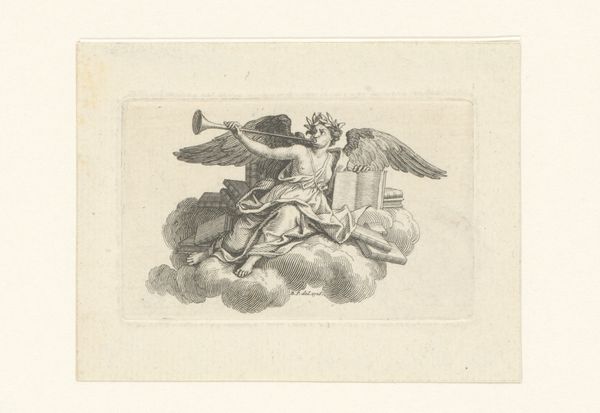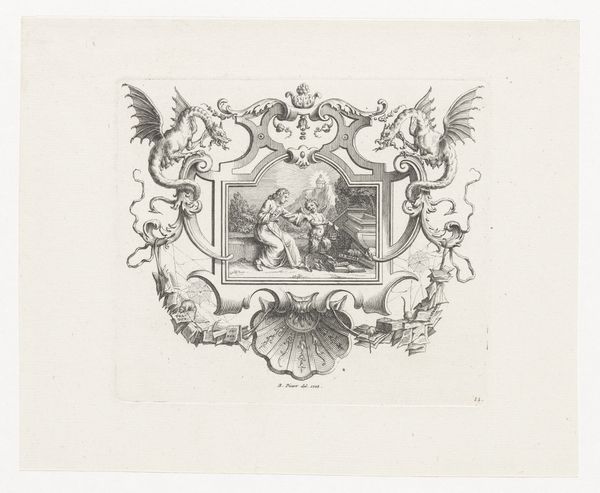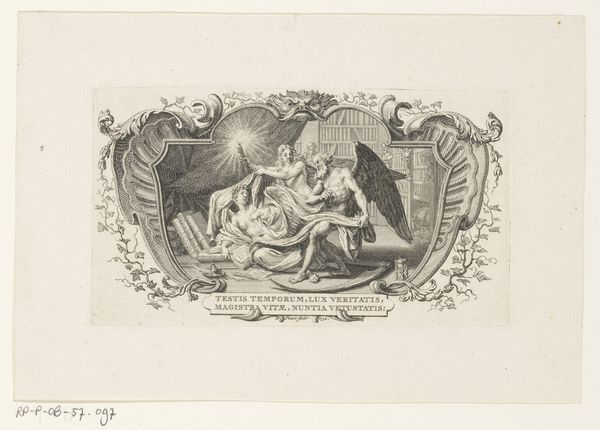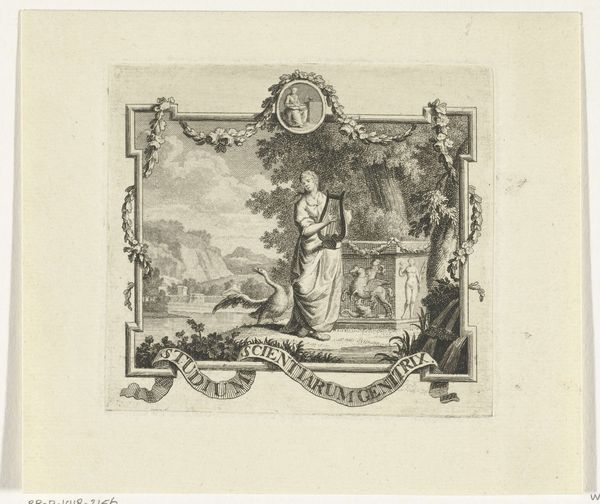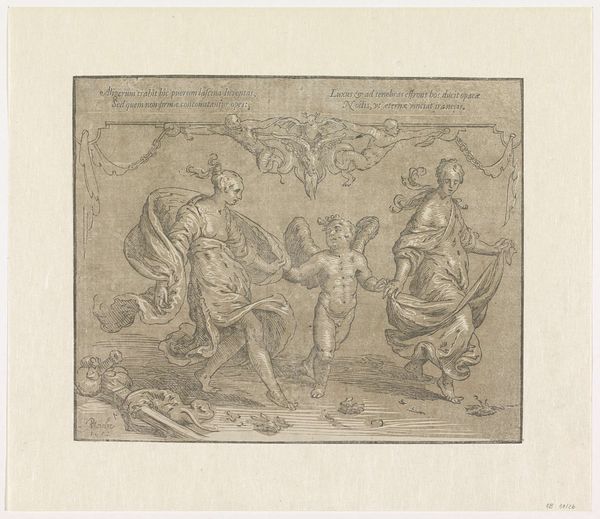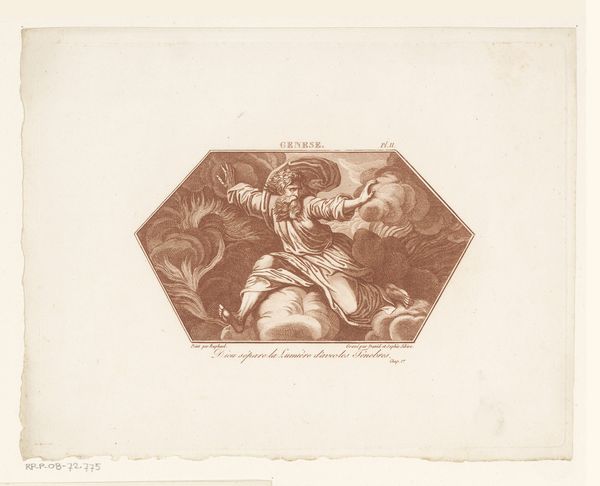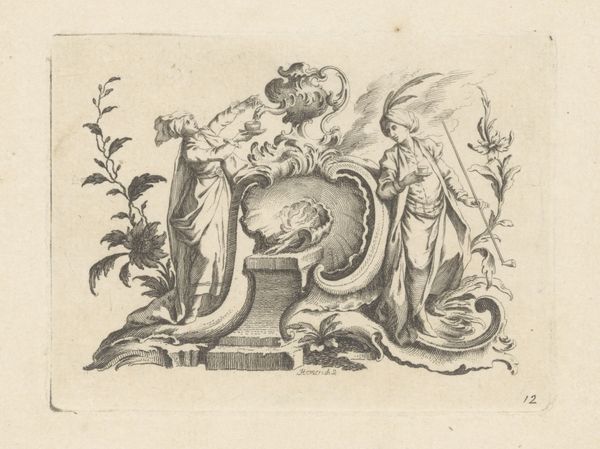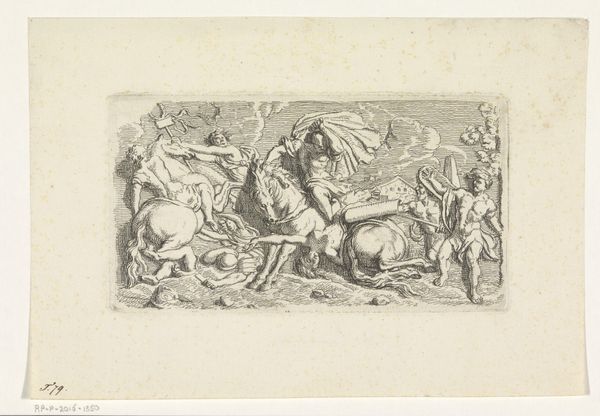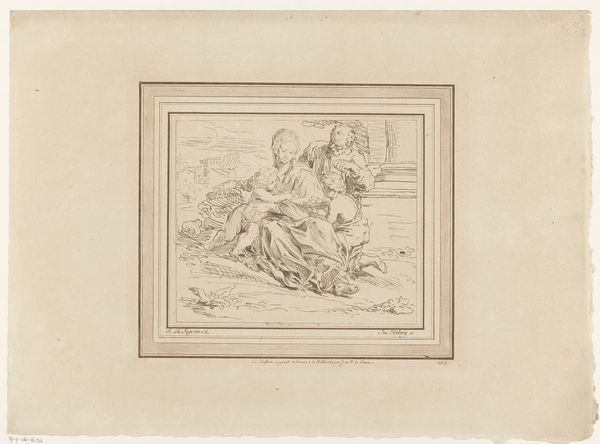
engraving
#
allegory
#
baroque
#
history-painting
#
engraving
Dimensions: height 84 mm, width 105 mm
Copyright: Rijks Museum: Open Domain
Curator: This engraving is called "Wapentrofee met putti met borstkuras," or "Trophy of Arms with Putti with Breastplate" in English. It was created between 1683 and 1733. It is held here at the Rijksmuseum and attributed to Bernard Picart. Editor: It feels quite opulent and yet… infantilized, if that makes sense. There’s a lot of visual contradiction here, as these children engage with implements of war and power. The image feels almost theatrical in its display. Curator: The visual tension certainly speaks to the complex and shifting iconography of the era. This engraving depicts a military trophy being handled, almost playfully, by putti, classical symbols of innocence and divine love. This speaks to a common baroque approach of intertwining allegorical themes of power and protection. Editor: And is it meant to glorify war, then, or… humanize it through innocence? I read it almost as a commentary, like Cupid playing with the instruments of Mars. It invites us to question what those objects actually represent when detached from violence, power and war, and embraced by childhood, or play. Curator: Or is it a reminder that power, even when adorned, always rests on certain... foundations? The putti are literally built upon weapons; the foundations upon which power manifests. There is an intended contrast at play here – a representation of childhood innocence juxtaposed against symbols of worldly power, and strength – which does not necessarily legitimize, but rather elevates. Editor: That said, isn’t there also an inherent danger in normalizing these kinds of visual displays of military might, regardless of the cutesy element? Doesn't it contribute to the ways societies become accustomed to symbols of force, violence and empire? The putti could also signify the corruption of innocence in service to dominance, the recruitment and instrumentalizing of youth and vulnerability as fundamental components of power projection and cultural indoctrination. Curator: I agree; a fruitful and important perspective! Considering that visual representations of power have always functioned as a kind of persuasive messaging, the layered nature of this baroque image reflects how iconography and the intersection of power, desire, innocence, and dominion function across longer durational scales, and the cultural psyche itself. Editor: I think what I find most unsettling, is the seemingly paradoxical and eternal challenge of how to navigate our fascination with, while challenging, iconography rooted in the legacy of conquest, empire, and violence.
Comments
No comments
Be the first to comment and join the conversation on the ultimate creative platform.
